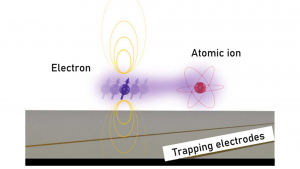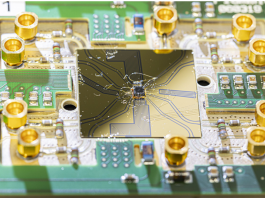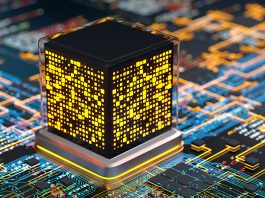University of Tokyo researchers have identified possible solutions to overcome the limitations of qubits for quantum computing.
Quantum computers are powerful computational devices that have the potential to solve several kinds of computational problems in a shorter amount of time. Because of this, quantum computing has been long held as the next great advance in computing; however, the limitations of quantum computers have prevented the technology from reaching its full potential. For quantum computers to work, quantum bits, or qubits, the basic unit of information integral to their operation, need to be fast and stable.
Simple binary quantum states and various physical implementations represent qubits. A potential candidate to stabilise qubits is a trapped electron that levitates in a vacuum. However, it is often difficult to control the quantum states or trapped electrons.
To try and overcome qubits’ limitations, University of Tokyo researchers discovered possible solutions for the advancement of quantum computing.
Their research paper, titled ‘Feasibility study on ground-state cooling and single-phonon readout of trapped electrons using hybrid quantum systems,’ is published in Physical Review Research.
Overcoming the limitations of qubits for quantum computing
To solve the problems of qubits, the researchers analysed two different hybrid quantum systems: an electron-superconducting circuit and an electron-ion coupled system. These systems were both able to control the temperature and the movement of the electron.
Alto Osada, Assistant Professor at the Komaba Institute for Science at the University of Tokyo, explained: “We found a way to cool down and measure the motion of an electron levitated in a vacuum, or a trapped electron, both in the quantum regime.
“With the feasibility of quantum-level control of the motion of trapped electrons, the trapped electron becomes more promising and attractive for quantum-technology applications, such as quantum computing.”
In their proposed solutions for quantum computing, the researchers included an electron trapped in a vacuum, called a Paul trap, interacting with superconducting circuits and a trapped ion. As ions are positively charged and electrons are negatively charged, they move toward each other when they are trapped together, due to the phenomenon named Coulomb attraction.

The interactions between the electron and circuit and the electron and the ion were particularly strong because of the light mass of the electron. The team also discovered that the temperature of the electron could be controlled using microwave fields and optical lasers.
The researchers measured their results with the phonon mode
The phonon mode of the electrode was further used by the researchers to measure the success of their calculations. Phonon is the unit of energy that characterises a vibration, or in this case, the oscillation of the trapped electron.
The researchers were able to achieve the desired result, a single-phonon readout and ground-state cooling, through their two hybrid systems they analysed.
“Highly efficient and high-fidelity quantum operations are available in the trapped-electron system,” said Osada. “This novel system manifests itself as a new playground for the development of quantum technologies.”
More research is needed to ensure that these methods can be applied to quantum computing
The researchers noted that additional experimental research is necessary to see if their methods can be implemented and applied to quantum computing. In the future, they are aiming to demonstrate their idea with a proof-of-concept experiment.
“We are planning to examine our schemes using electrons trapped in a microwave cavity,” said Osada. “Through this research, we will be able to get another step closer toward precise quantum operations and toward the implementation of quantum computation.”









